Psst. Guess what. Fiber is a… wait for it… CARB!!! How dare I say that word, right? Yet another example that CARBS AREN’T BAD. I so hope you are getting this by now. Also, fiber is a nutrient. It’s considered a micronutrient to be exact. Macronutrients (or Macro’s, if you are into that sort of lingo) are fats, carbs, and protein.
In nature, fiber is part of the plant cellular structure. Plants dominate the fiber game. I don’t care how much Metamucil you take.
If you take multiple sugar molecules and link them together, you’d get fiber. That doesn’t mean it behaves like sugar by any means. It doesn’t. Digestion of refined carbohydrates starts in the mouth, and in about 20 minutes, it’s already been absorbed in the small intestine. Meanwhile, fiber remains intact as it passes through your mouth, stomach, and even 15 to 20 feet of small intestine, so by the time it reaches your colon, it’s the same molecule that went in your mouth. Miraculous right?!
There are so many benefits of a high fiber diet. Some important fiber points I think you should know:
More Than 1 Type of Fiber
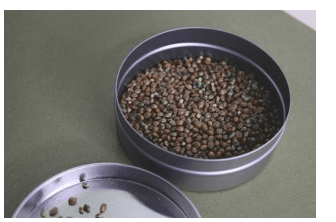 Yes, nutrition labels clump “dietary fiber” under one heading. But there are actually two different types of dietary fiber: Insoluble and soluble. You want both!
Yes, nutrition labels clump “dietary fiber” under one heading. But there are actually two different types of dietary fiber: Insoluble and soluble. You want both!
Insoluble fiber is roughage or dry fiber. It bulks up your stool, moving things through your digestive tract to ease constipation. Foods high in insoluble fiber are: bran, whole grains, seeds, and the skins of fruits and veggies.
Soluble fiber binds to water to form a gel in your digestive tract and slows down digestion, stabilizing your blood sugar to prevent spikes that leave you hungry. It also gives your body more time to absorb nutrients and grabs cholesterol to lower your overall levels. And, like insoluble fiber, it keeps things moving through your digestive tract to keep you regular. Foods high in soluble fiber are: bananas, beans, lentils, chia seeds, hemp, and flaxseed.
Fiber Does More Than Just “Go Right Through”
It contributes to quality bowel movements by correcting diarrhea and constipation, increases the weight and size of your bowel movement, lowers cholesterol, and controls blood sugar. That’s a lot of work.
We are literally incapable of processing fiber on our own. We must consume it. It supports a homeostatic microbiome. Every single plant, every single type of fiber, requires a unique team of microbes working in concert to get the job done. It’s demanding work, but what follows is miraculous. Over 70% of our immune system resides in our digestive tract, so keeping it healthy will in turn improve your overall health.
Don’t Just Rely on Processed Fiber Sources
Oftentimes people think that whole grain or bran cereal is the only way to meet your fiber needs in a day. But most brands have a lot of added sugar. Some are higher in sodium and some are abundantly processed. Maybe try beans, lentils, veggies, chia seeds, flaxseeds, hemp seeds, and nuts.
If You Have Diarrhea, You SHOULD Eat Fiber
 While it’s true that too much insoluble fiber, like broccoli, can lead to a case of flatulence and the runs, soluble fiber can stop a case of the runs in its tracks. People think if they’re having a loose stool they should cut out all fiber. Do not. When soluble fiber enters your system, it actually slows down your digestive tract. Go bananas! 😉
While it’s true that too much insoluble fiber, like broccoli, can lead to a case of flatulence and the runs, soluble fiber can stop a case of the runs in its tracks. People think if they’re having a loose stool they should cut out all fiber. Do not. When soluble fiber enters your system, it actually slows down your digestive tract. Go bananas! 😉
Fiber Does Not Cause IBS
If you’re diagnosed with IBS, your doctor may recommend a low-FODMAP diet, where you’ll reduce certain carbs that are hard to digest. While you’ll eliminate certain tummy upsetting sources of fiber from your diet, like apples and cauliflower, a low-FODMAP diet isn’t necessarily a low-fiber diet. Try foods like chia seeds, artichokes, and kiwi. Keep in mind that a low-FODMAP diet isn’t meant to be long-term. Instead, with the help of a Registered Dietitian Nutritionist, the idea is to eliminate all FODMAP foods and gradually add them back into your diet until you figure out the specific culprit behind your stomach issues.
Fiber Does More for You Than Keep You “Regular”
Fiber isn’t just about your digestive system. A high-fiber diet includes loads of anti-inflammatory antioxidants, reducing your risk of chronic conditions including heart disease and type 2 diabetes. Because it keeps your appetite a bit more regulated, it helps control your weight. Getting a healthy dose of daily fiber (35g/day) lowers your risk of colorectal cancer by keeping things moving in your digestive tract. And the prebiotics in some types of fiber feed the good bacteria in your gut, which have been shown to boost your immune system and mental health.
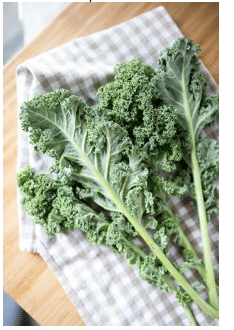 You Need More Than Fiber to Cure Constipation
You Need More Than Fiber to Cure Constipation
While it’s true that a low-fiber diet is a common cause of constipation, there are many other culprits behind this condition. Dehydration can back you up, even if you’re eating loads of fiber, since your stool isn’t moist enough to efficiently move through your digestive tract. Not being active can also lead to constipation. Medications can increase constipation. If you’re noticing some changes, always talk with your doctor.
Not All Veggies and Fruits Contain Loads of Fiber
When it comes to fiber, not all fruits and veggies are created equal. Watery produce like cucumbers and watermelon have very little fiber, while cruciferous veggies (kale, broccoli, cauliflower) and denser fruit (avocados, pears, apples) are great sources of fiber, as long as you eat the skin (except, of course, on avocados), which contains about half their fiber content. Dried fruit is also a great source of fiber; just watch out for preservatives like sulfites and crazy added sugar.
Don’t Just Count Fiber Grams
Processed foods like cereal and protein bars have fiber added to them, but not always the kind that keeps blood sugar from spiking.
Typically the more cooked or processed a food is, the more it raises blood sugar. Most natural, whole foods, on the other hand, have fiber that’s harder for your body to break down (hence the slowing down of digestion, thereby slowing down the rise of blood sugars). If you’re having oatmeal, opt for steel-cut or whole rolled versus instant oats, which have been heat-treated so that they’re quickly digested as soon as they hit your system. When it comes to bread, whole wheat is better than white, while stone ground is even better. Keep looking for “whole” in the first ingredient.
Fiber Supplements Are Not the Best Place to Start
I bet you’re wondering, should I take a fiber supplement? If you’re looking to add fiber to your diet, a supplement is not the place to start. Studies show if you just add fiber supplements like powdered fiber to your day, and your diet doesn’t contain fiber-rich whole foods, it doesn’t have protective effects on your overall health. You’re missing out on other benefits. And something troubling is too much soluble fiber from supplements can bind to minerals including calcium, iron, magnesium, and zinc as well as some medications, so that they pass through your system without being absorbed. My suggestion is to start with adding more high-fiber whole foods to your diet slowly. If you still think you’re not getting enough fiber, be careful about when you take that supplement. If you’re taking a fiber supplement in the morning and that’s when you take your multivitamin, rethink your timing.
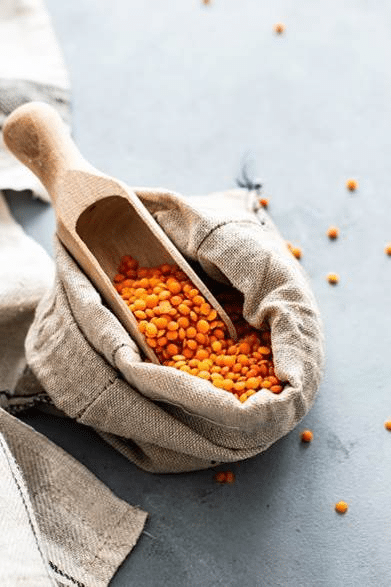 What Foods Are High in Fiber?
What Foods Are High in Fiber?
Fiber comes from plants, so don’t bother looking for it in chicken dinner. Check it:
- Whole-wheat pasta 1 cup cooked = 7g fiber
- Barley 1 cup cooked = 6g fiber
- Chickpeas ½ cup cooked = 6g fiber
- Edamame ½ cup boiled and shelled = 4g fiber
- Lentils and split peas Lentils, ½ cup cooked = 8g fiber / Split peas, ½ cup boiled = 8g fiber
- Berries 1 cup = 8g fiber
- Pears 1 medium pear = 6g fiber
- Artichokes hearts ½ cup cooked = 7g fiber
- Brussels sprouts 1 cup cooked = 5g fiber
- Chia seeds 2 tablespoons = 10g fiber
- Haas avocados ½ avocado = 5 g fiber
And lastly…
Eating more fiber? Do it slowly and add more water.
Before you jump on the fiber bandwagon, a word of caution: add fiber to your diet slowly. If you aren’t used to a lot of fiber, eating too much can cause bloating and cramping. Increase high-fiber foods gradually over a few weeks to avoid that inflated feeling.
Another important tip: when adding fiber to your diet, be sure to drink enough water. Fiber pulls in water. That’s a good thing, but if you aren’t drinking enough, it can make constipation worse. To keep things moving, drink at least 2 liters of fluids each day. If you increase your fiber slowly and steadily, and drink lots of fluid, your body will adjust. Don’t give up.
And here’s a recipe by Studio SWEAT family member Haley (our beloved Eric’s wife) who is a master at sustainability and homeopathic recipes and lifestyle. She inspires me weekly (you simply MUST follow her on Instagram @hippiehappyhaley):
Hi everyone!
I am so thankful that Miriam has shared this information about fiber with us. It is so important! Before becoming vegan I had all kinds of miserable digestion issues, but now that my diet is mostly made up of fruits, veggies, grains, beans, nuts, and seeds, it’s been a complete game changer! My digestion is healthy and regular, and my body feels so much better. This oatmeal is creamy, hearty, comforting, and packed full of both soluble and insoluble fiber. Feel free to get creative! Switch up the nectarine for any other fruit you have on hand or add more seeds and fruit to your liking. If you’d prefer to skip the coconut milk, you can use an entire cup of almond milk instead, but just know that it won’t be quite as creamy. Enjoy, friends! Peace be with you.
Creamy Fiber Fueled Oatmeal
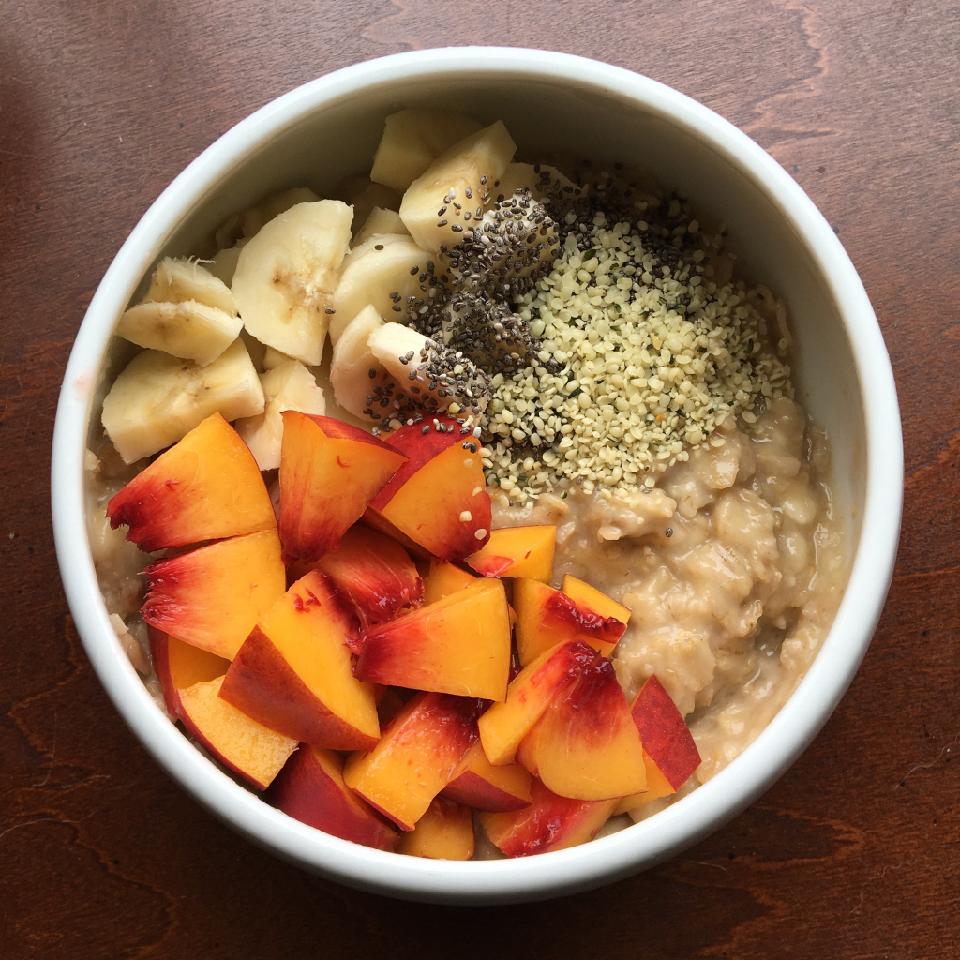
- 1/2 cup canned lite coconut milk
- 1/2 cup plain unsweetened almond milk
- 1 pinch salt
- 1/2 cup rolled oats
- 1-2 teaspoons maple syrup
- 1 banana
- 1/2 nectarine
- 1 teaspoon chia seeds
- 1 teaspoon hemp seeds
- Bring coconut milk, almond milk, and salt to a boil in a small pot.
- Add oats and cook on low for five minutes, stirring occasionally.
- After five minutes, turn off the heat and let sit for two minutes. At this time, cut the banana in half. Cut one half in small pieces and do the same with the nectarine half. Put the other half of banana into the bowl you’re going to eat out of and smash it thoroughly with a fork.
- Add 1 teaspoon of maple syrup to the oatmeal and stir thoroughly. Taste and add another teaspoon if you prefer more sweetness.
- Add the oatmeal to the bowl of smashed banana and stir to combine.
- Top with cut banana and nectarine, chia seeds, and hemp seeds. Enjoy!
~Haley
Go forth my fibrous finding friends!
Miriam Jirari MPH, RDN, CPT
Certified Intuitive Eating Counselor
Studio SWEAT Dietitian
Resources:
https://www.hsph.harvard.edu/nutritionsource/carbohydrates/fiber/
11 Fiber Myths You Should Stop Believing | Eat This, Not That!




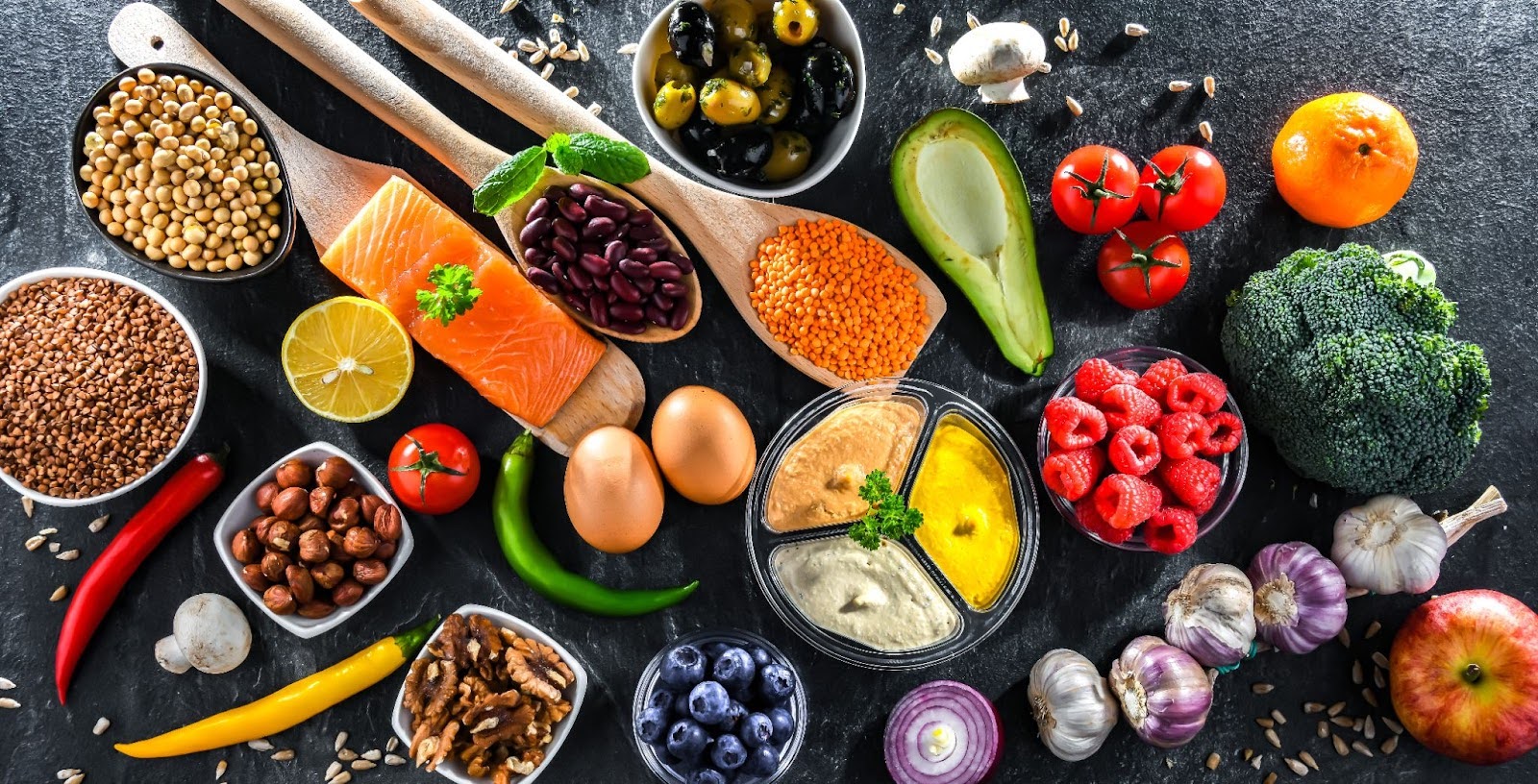





Comments - 0